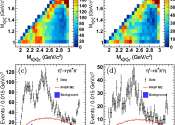High-energy collision study reveals new insights into quark-gluon plasma
In high-energy physics, researchers have unveiled how high-energy partons lose energy in nucleus-nucleus collisions, an essential process in studying quark-gluon plasma (QGP). This finding could enhance our knowledge of the ...









